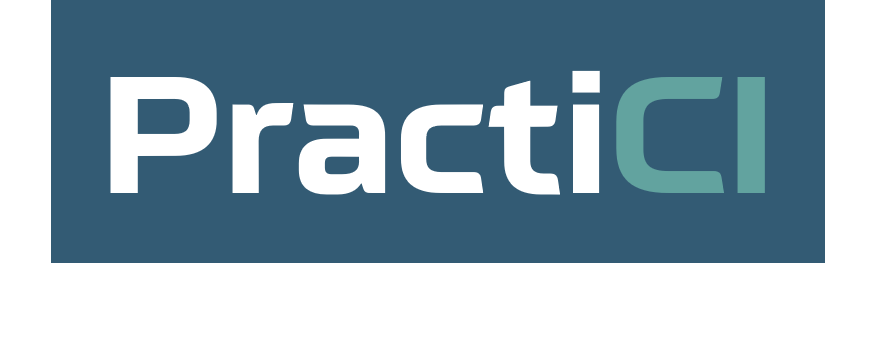Introduction
Resistance. A word that strikes trepidation into the very heart of every change practitioner. Sooner or later, we all come across someone who is ‘resistant’ to the change our team is trying to achieve. So, just how do we go about overcoming resistance to change effectively?
In this article we’ll explore a real-world example. It’s perhaps the most extreme case of individual resistance to change that I’ve encountered. We’ll cover how this resistance formed, the impacts it had on the project, and how we worked to change the narrative and reach a positive outcome.
The Project In Case
Our example involves an improvement project that aimed to free time from a large commercial team to enable new business development. We believed a 30% time release was possible for this commercial team and, for this business, that meant significant potential for new business and profit. This was a big cross functional project that was complex to set up and had multiple senior stakeholders who could all veto it if they wished.
The aim was to migrate admin work from the commercial team into an existing back-office team and, at the same time, create a new middle office team to migrate the more technical admin tasks to. This middle-office team would report into the current back-office leader, expanding their responsibilities.
Not content with just moving the work from A to B and C, I wanted to take the waste out of the transferable tasks at the point of transfer by using lean approaches. This would also mean we could then service that work with less FTE, lowering our cost of delivery and, effectively, increasing company margins.
All very good stuff indeed. Commercial were fully onboard as they hated the steadily increasing admin workload, which stopped them enjoying nice sales lunches to build relationships with their clients. Frankly, I agreed. Excess admin work in highly paid people tasked with winning and maintaining business is a bit of a talent and opportunity waste, let alone the business impact on growth.
Introducing Our Resistant Stakeholder
One of our key stakeholders was the back office leader. They had a good understanding of the intent as they had been involved in initial project conversations already.
They were a long-term senior leader, a strong character and, enjoyed a fair degree of control over their team. In addition, they were deeply protective of their team, and equally passionate and proud of the quality of the work completed. We had an OK relationship as I’d run some improvement activity in their area before, but it wasn’t beers after work friendly.
Ahead of project launch, I went to have a discussion with them. I opened the discussion on which team members should be part of the project team. They listened but were very quiet.
I then moved on to the planned approach of the project and the transfer of work, how we saw that happening, and that we’d welcome their support and involvement. A response came back – “No” – coupled with folding their arms and looking down.
Somewhat taken aback, I talked for a minute or two, but they never said another word nor even looked up. So, suggesting another meeting in a few days, I got up and left.
At the next meeting, the same thing happened. This time ‘no’ became “no, I’m not doing it”. Fold arms, look down, stay quiet.
Meeting three went exactly the same way.
I spoke to my boss who told me to find a way to bring them onboard. No possible solutions were offered. To be fair, my boss didn’t like conflict and had had several difficult moments with this stakeholder in the past. I was on my own.
I took a few days to figure out how I could handle this. There would be no project without this stakeholder on board. Senior leadership appeared to have no appetite for doing anything. I had to overcome their resistance to change another way.
Overcoming Resistance To Change Requires Causal Analysis Of Perspectives
As I knew this person from previous activities, I went into discovery mode to determine their perspectives on why the project had triggered their resistance.
I asked, ‘what might be causing this person to react in this way’?
Writing them from the stakeholders’ point of view forces me to think harder. Using the construct My Current Need or Situation-My Concern-Outcome helps me structure my thoughts. Here’s a few of the things I identified as plausible perspectives.
- I’m the leader of the back-office. I know this world and I’m in control of everything. This project will bring a new, more senior function and result in me losing control.
- I know how the current work is done. This project will introduce new work that I may not know. I will have to delegate ownership.
- I’m comfortable managing my current team. The project will bring more people under me. I don’t know if I can manage? Or, if I will have the time to do this as well. I’ll be uncomfortable with that so will have to work more hours.
- I look after, and protect, my team. I’m concerned about the impact to those in the new middle office as they will be close to commercial. I’ll need a new interface into commercial to protect them.
- Our reputation for quality is very high. These new tasks are harder to perform. If our quality drops what will happen to us/me? Will we be blamed.
The central themes of someone’s resistance to change are often focused on loss, fear, and worry. We have to find their perspectives and then seek to explain the fear, loss, or worry that may be associated with them.
I never see the result of this activity as definitive, more a triggering of ideas. Remember, these are my views of them. I might get lucky but usually, the real root cause is deeper and/or a combination.
With stakeholders who push back but with whom you can engage, I’ll take that list into the next meeting and start exploring possibilities with them. I wouldn’t say these as written above as that’s a sure-fire way to get your stakeholder to put more barriers up. “Hey, Mr Stakeholder, are you fearful of a loss of control?”. Exit stage left. No, you go subtly, indirectly, use examples, probe for their concerns, adapting as you listen to their words and observe their body language.
Seek Ideas From Those Who Know
However, I realised that to avoid a meetings 1 to 3 situation, I needed further insights on my list. I decided to hold a ‘secret’ coffee meeting with this stakeholders’ direct reports. A high-risk strategy for all parties given the consequences if our stakeholder found out.
In the time it took to drink a few cups of coffee we had run through the list, and together, we had brainstormed to reach what we believed was the real cause.
Why did I choose to speak to these people? They knew our stakeholder better than anyone else in the business, having worked with them for many years. Also, they were highly supportive of the project. It meant growth and development for them both individually, and for their teams. To them, I believed the risk of the meeting would be worth it.
They thought the main issue was this. Our stakeholder required total control. They would be fearful and worried because they didn’t understand the technicality of the tasks being transferred. As a result, they would percieve a loss of control and loss of respect from their team members.
Our stakeholders’ method of working today meant that they needed to know the detail on every task. Now, we might have personal views that differ to that, but for this stakeholder, this was a perspective on why the team was successful.
Between us we agreed that offering this person a chance to take part in the training of the transferred tasks would be a significant step to removing the barrier.
We had identified options for overcoming this stakeholder’s resistance to change, now it was time to test this idea.
Engage, But Do It Wisely
I met with our stakeholder. This time I opened the conversation a different way. “I’ve been thinking”, I said.
“I wonder if you would like to take part in the training when we transfer the work? I’m sure you know the tasks already, but I can see that it will help your team to better take on the work if you are there. At the same time, you could discuss how to deliver those tasks in practise.
It might put everyone in a stronger position to manage the new work, and ensure that the quality of the work your team is known for is maintained at the same high levels that your current activities are at.”
Then I shut up. Next person to speak and all that.
I wrote those sentences beforehand and edited them to seem natural. I remember practising them for nuance, tone, pace, and emphasis the night before.
In those sentences, I tried to hit the issue indirectly but front on – the lack of knowledge and perceived loss of control. And, to appeal to things that this stakeholder held dearly – being in control and setting the direction, being the all-knowing senior, and ensuring great quality.
It was an appeal to the perspectives that mattered to them, presented as an option they could present as their idea.
Resistance Overcome
Wow. Eyes lit up. Body language opened and became embracing. In a single instant this stakeholder was fully onboard. Dialog literally poured forth. We had found exactly the right hook and now I just reeled this individual into the project fold.
From that moment onwards, this stakeholder became a vocal and active supporter of how great this project would be. The project team ensured they had an active role in all elements of the work transfer process, sponsoring and engaging in many activities. The project was a total success and delivered more benefits than we had envisaged.
To date, this remains the most extreme case of ‘resistance’ I’ve ever encountered and takes first place for the most extreme turnaround too!
Reflect and Learn
Afterwards I reflected on the whole thing that had played out over three weeks. There were three things I could have done but didn’t. I could have:
- Given up and said I can’t get this person to shift. I didn’t. To be fair, I did think of it, but my boss wouldn’t let me.
- Asked a board member to ‘nudge’ the stakeholder. I thought about that too, but that would have meant bypassing my boss and I figured I would lose control of the outcome if I did. Unintended consequences and all that.
- Bypassed the stakeholder and forced the project through. I had the position and authority to do that, but I knew it would result in a sub-optimal outcome.
In the end, I decided I was happy with how we had resolved it. After all, whilst it had been difficult and had cost us three weeks on the schedule, I think that was a small price to pay. Indeed, I now think that was a bargain.
Resistance To Change Is In The Eye Of The Beholder
The whole episode reinforced to me that the term ‘resistance to change’ originates from the perspective of the change team. In the eyes of the so labelled ‘resistor’ it’s anything but.
Working with stakeholders may not be easy, and overcoming resistance to change is harder still. As this example shows, the more we understand about their perspectives, the more ways we can find to move their position.
Sometimes our stakeholders will tell us why they don’t support our project. As this example shows, sometimes they do not. It is our responsibility to take the initiative and seek out those stakeholder perspectives that matter dearest. Even if that means we have to take a risk and reach out to others.
So, in your next project, will you try overcoming resistance to change, or will you try understanding, and working with your stakeholder’s perspectives?
My advice? Find the hook that they want to bite.










0 Comments